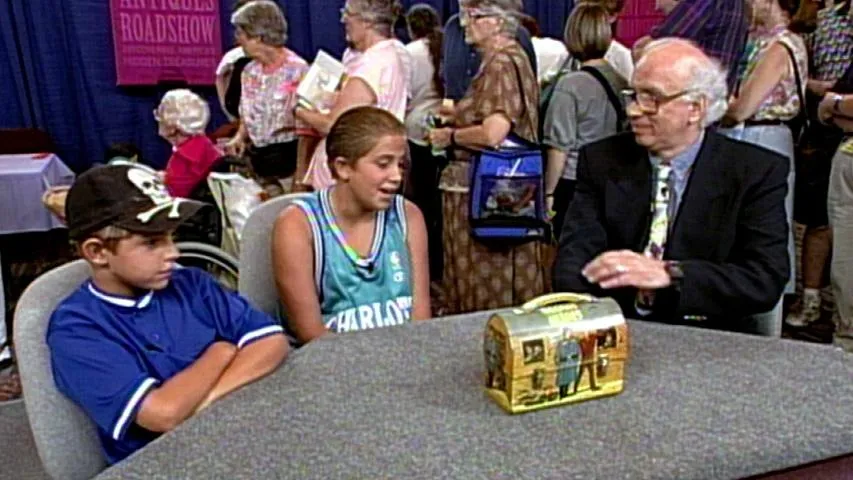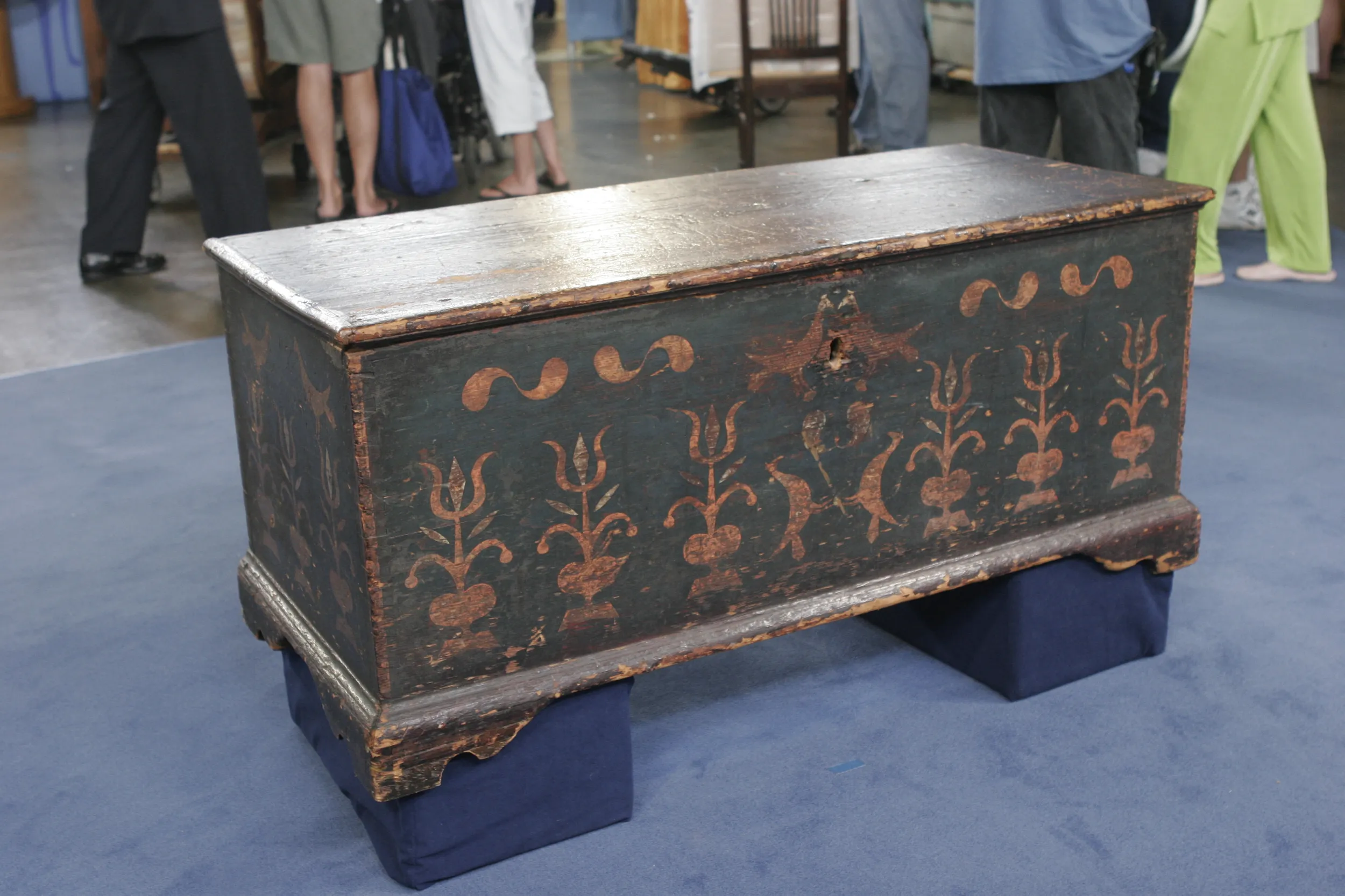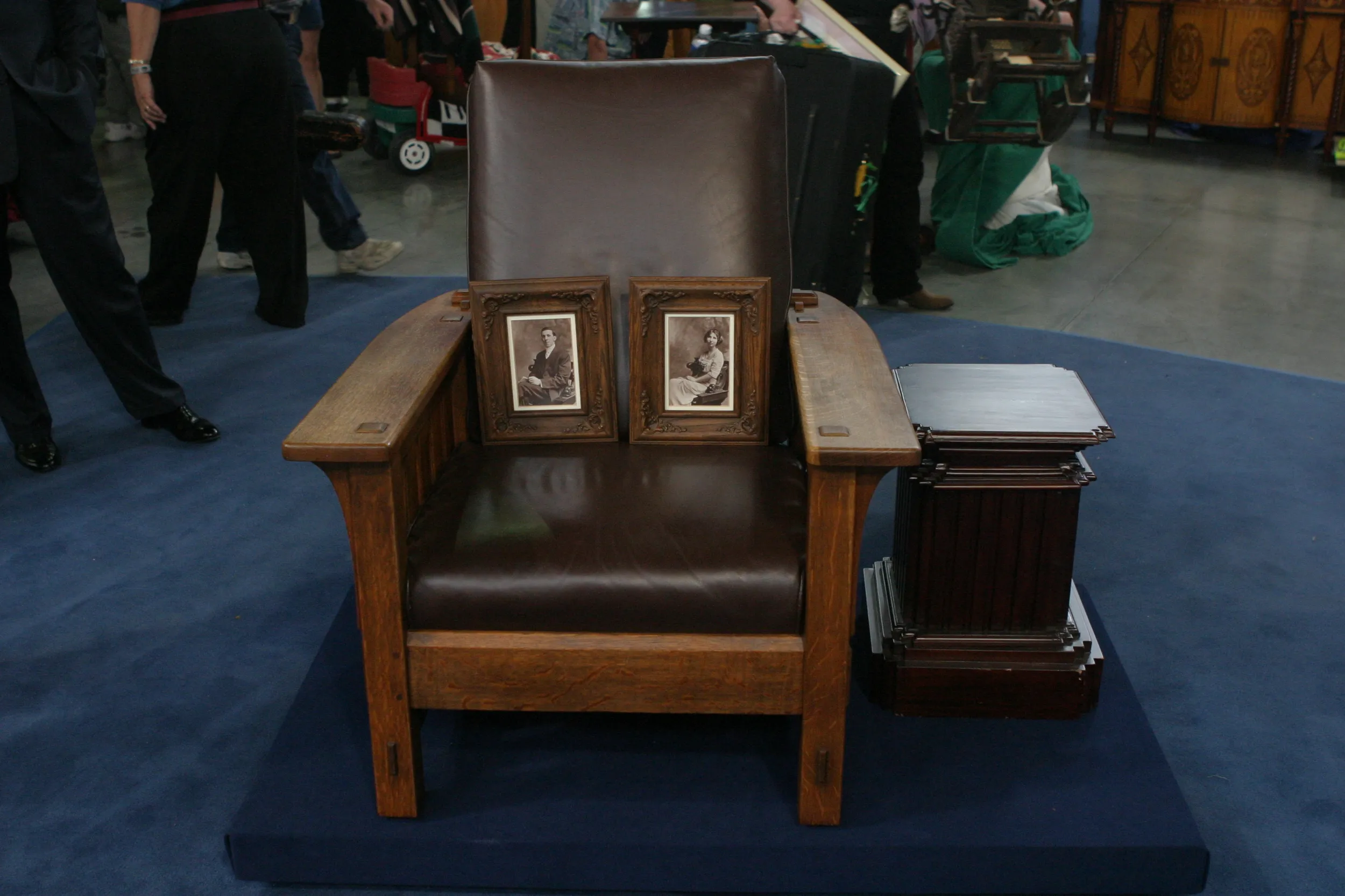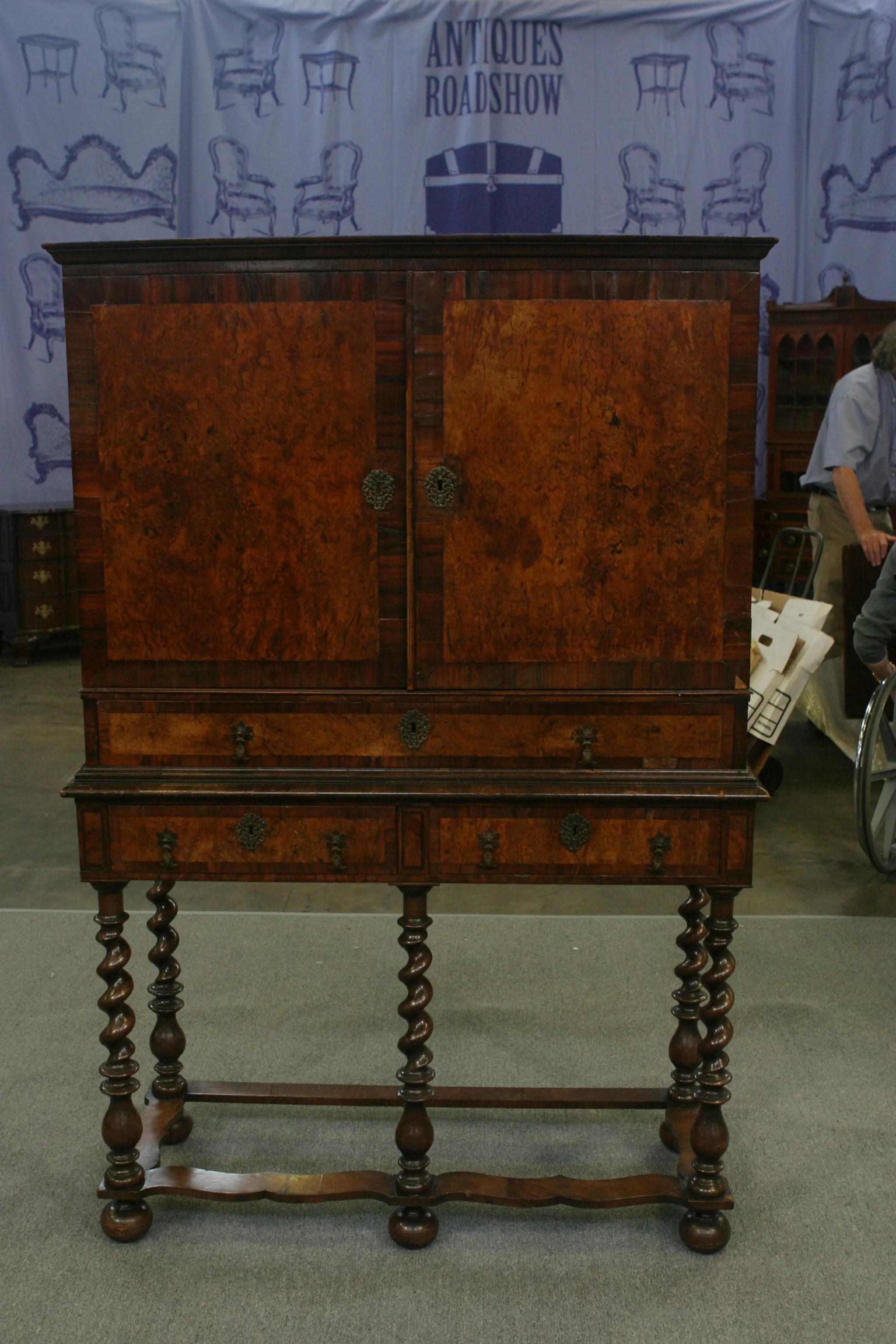APPRAISER: This is a very interesting piece. Could you tell me a little about how you came about it?
GUEST: Yes, my parents were in South America all through the '30s, and this was bought in, I believe, '36 in Cuzco, Peru. I think it's called a vargueño, and that's all I know about it.
APPRAISER: You're absolutely correct. It is, in fact, a Peruvian vargueño and it dates probably to the mid-18th century, so it was probably made around 1750, plus or minus 50 years. And what's interesting about this piece in particular is that you still have a great deal of originality to the piece. It hasn't really been tinkered with at all. And interestingly, also, you have some wonderful patina in the ironwork in this piece right here. For example, the hasp is original, the lock plate is original and a vargueño is actually a traveling desk, and what's interesting about this piece in particular is that it's actually rather small. Most of the chests were about 30 inches wide and about 20 inches high. I would probably equate this with today's modern laptop computer.
GUEST: Yeah.
APPRAISER: The traveler was probably traveling throughout Peru or the highlands in Bolivia and would keep his personal belongings inside this box. Papers would probably be kept in this drawer here, and what's interesting is that the dovetailing for this piece is quite well-made, and once again, this piece is all original. It has not been tinkered with, which is quite rare. Interestingly, the front of the drawers have provincial village scenes, which is a bit rare. Usually, you have floral patterns which are engraved or inlaid in wood. And the latches here are actually also original.
GUEST: That's great.
APPRAISER: And one thing which is unfortunate is that the inlay here in the back has popped off, but that's actually nothing significant, because...
GUEST: That's the way it's always been since we've had it.
APPRAISER: But since this was probably a piece which would be against a wall or on a table, it's really nothing... nothing very damaging at all. Of slight concern might be the fact that these little inlays are beginning to pop, and that's probably a result of the drastic change in temperature and humidity from when it was brought over from South America.
GUEST: Yeah.
APPRAISER: And another thing which is interesting is this little leather box which was found inside. And this is also a very miniature version of a petaca, which is actually a leather trunk. Normally, these are the size of a large steamer chest.
GUEST: Oh, I didn't know that!
APPRAISER: Yeah, and this is the first one I have ever seen which is this small. This probably dates to the 18th century as well, so it was probably made around the same time that this piece was...
GUEST: I wonder why they did make such a small one.
APPRAISER: I don't know-- this probably held some coins, gold coins, or some other personal objects of the owner. I don't know what you think this piece is worth.
GUEST: I have no idea... no idea.
APPRAISER: Um... given the fact that it's in the good condition that it's in, I would probably place an auction estimate at around $3,000 to $5,000.
GUEST: Oh, really!
APPRAISER: Absolutely.
GUEST: That's exciting. That's really exciting.










